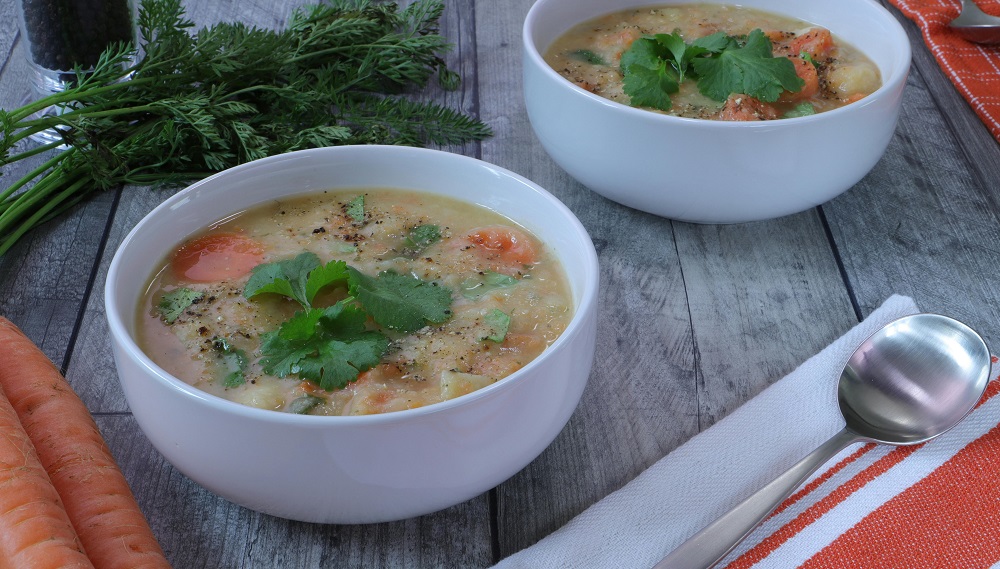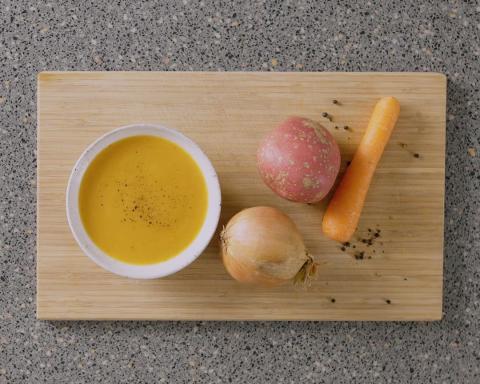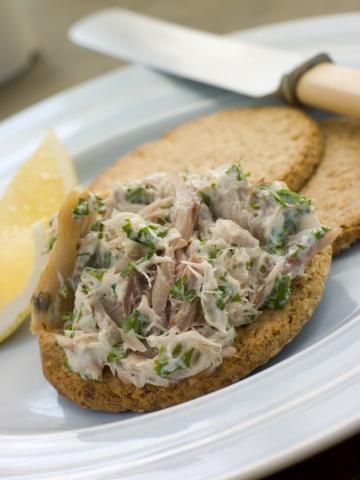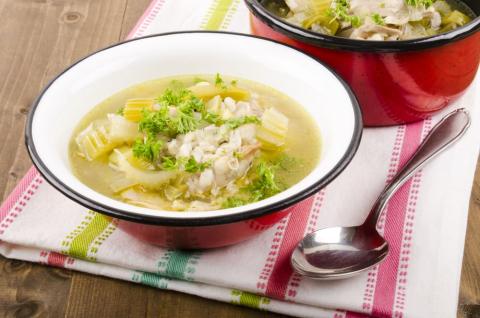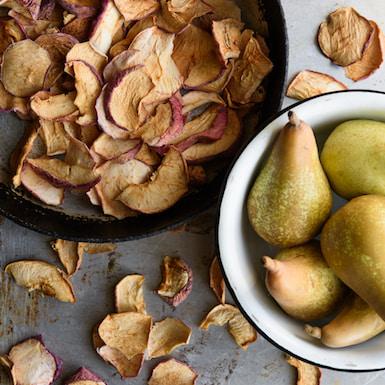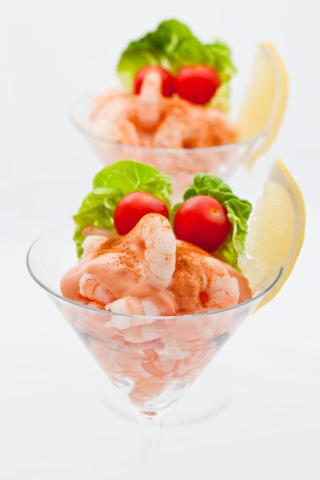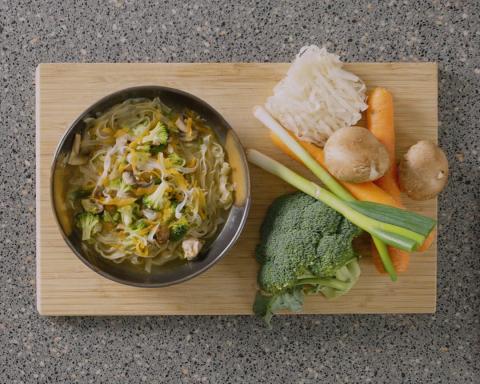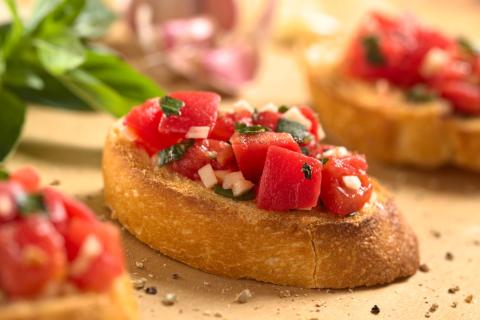- 2 Medium Sized (170g) Potatoes
- 2 (300g) Leeks
- 2 Medium (160g) Carrots
- 1 Medium (150g) Onion
- 2 Medium (200g) Courgettes
- 2 Frozen Tablespoons (60g) Frozen Green Peas
- 1 Small Tin (200g) Chopped or Plum Tomatoes
- 1 (7g) Vegetable Stock Cube (use reduced salt whenever possible)
- (750ml) Water
- 1 Pinch Black Pepper to taste
Ingredients
Allergy Disclaimer
Always check the label of each ingredient for allergy warnings.
Method
- Wash, peel and chop the potatoes, leeks and carrots. Peel and chop the onion. Wash and slice the courgette.
- Put the prepared vegetables, except the peas and tomatoes, in a large pan.
- Add the water and the stock cube.
- Heat the mixture to boiling point and then reduce the heat to a simmer. Put the pan lid on and cook for 20 minutes or until the vegetables are tender. Add a little more water if needed.
- Add the frozen peas and the tinned tomatoes. If using plum tomatoes, chop them up using a spoon when in the pan. Cook for 5 minutes and then leave to cool for 10 minutes.
- Use a blender or potato masher to blend the soup to how you like it (optional).
- Season with black pepper and reheat gently. Serve hot.
Time Saver Tips
You don’t have to peel the potato or carrots to make this soup delicious – just chop them up and toss them in. You can save time by preparing the soup in advance and heating it when you want to. Remember to cool it down before putting it in the fridge or freezer.
Cost Saver Tips
Make double the quantity and freeze half. This is a good way of using extra or leftover vegetables. Other vegetables that could be substituted in this recipe include turnip and parsnip.
Tips for Kids
Blend the soup so that the vegetables are hidden. You could also add a tablespoon of fresh parsley to the soup if you like. Serve with a slice of thick wholemeal bread for extra fibre.
Nutritional Information
Based on a single serving of 363g (% of an adult's reference intake)
Energy
88 kcals ( 4 %)
329 kJ ( 4 %)
Fat
0.1 g ( 1 %)
Saturates
18.1 g ( %)
Sugar
10.4 g ( 12 %)
Salt
0.8 g ( 13 %)
Detailed nutritional information
| Per 100g | Per 363g serving | |
|---|---|---|
| Energy Kcals | 24 | 88 |
| Energy Kj | 91 | 329 |
| Protein | 1.1 g | 4.2 g |
| Total Fat | g | g |
| Saturated Fat | 0 g | 0.1 g |
| Carbohydrates | 5 g | 18.1 g |
| Total Sugars | 2.9 g | 10.4 g |
| NSP Fibre | 1.4 g | 5.1 g |
| Sodium | 85 mg | 307 mg |
| Salt | 0.2 g | 0.8 g |
Find out about nutritional labelling
Nutrition labels on the front of packaging
- Most of the big supermarkets and many food manufacturers display nutritional information on the front of pre-packed food.
- Front of pack nutrition labels provide information on the number of grams of fat, saturated fat, sugars and salt and the amount of energy (in kJ and kcal) in a serving or portion of a recipe.
- The labels also include information about reference intakes (expressed as a percentage) which are guidelines about the approximate amount of particular nutrients and energy required for a healthy diet.
- The colour coding tells you at a glance if the food has high (red), medium (amber) or low (green) amounts of fat, saturated fat, sugars and salt.
- The more greens on the label, the healthier the choice
- Amber means neither high nor low, so you can eat foods with all or mostly ambers on the label most of the time.
- Reds on the label means the food is high in that nutrient and these are the foods we should cut down on. Try to eat these foods less often and in small amounts.
Food shopping tips
If you’re trying to decide which product to choose, check to see if there's a nutrition label on the front of the pack. This will help you to quickly assess how your choices stack up. You will often find a mixture of red, amber and green colour coding for the nutrients. So when you're choosing between similar products, try to go for more greens and ambers and fewer reds if you want to make a healthier choice.
 Activities & Play
Activities & Play Behaviour
Behaviour Childcare
Childcare Development & Growing Up
Development & Growing Up Family, Friends & Relationships
Family, Friends & Relationships Feeding Your Baby
Feeding Your Baby Food & Eating
Food & Eating Health & Safety
Health & Safety Mental Health & Wellbeing
Mental Health & Wellbeing Money & Work
Money & Work Online Behaviour & Safety
Online Behaviour & Safety Pregnancy & First Days
Pregnancy & First Days School & Education
School & Education Sleep
Sleep

